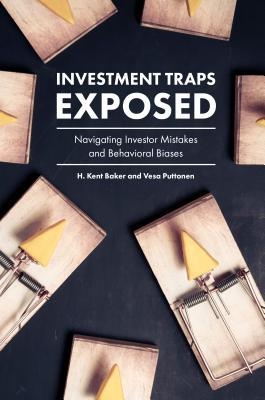
1
NAVIGATING THE INVESTMENT
MINEFIELD
We don’t have to be smarter than the rest. We have to be
more disciplined than the rest.
Warren Buffett, Chairman and
CEO of Berkshire Hathaway
The investment world can be a scary place. During the past
decade, investors have faced many challenges including the sub-
prime mortgage crisis, a deep recession, a slow economic recovery,
wars, terrorism, and much more. Investors also face a vast array
of investment options with many vying for their business.
However, some of those providing these “opportunities” seek to
take advantage of investors. Although most investors realize they
are fallible, they often have no clear idea why or what they can do
about it. No wonder people often view investing as overwhelming
and intimidating, especially if they attempt to tackle this task on
their own. Although most individual investors are not experts,
they still must take responsibility for their actions and financial
lives. To be successful, investors must avoid many pitfalls along
the way or risk making errors that affect their wealth.
Given the complex and challenging world of investing, what
chance do less savvy investors have navigating the investment
minefield and emerging unscathed? The answer is not much unless
they recognize the investment traps that are strewn along their
path and deliberately avoid these financial landmines. They also
need to separate investment fads from tenets that stand the test of
time. This, of course, is easier said than done. Awareness may
lead to a small improvement in actions and decisions but any
effect is likely to be short-lived unless someone can change or
remove the cause of the biased actions.
In the world of investments, a trap is something that can lead
to losses of capital or opportunities to make productive invest-
ments.1 Although succumbing to such traps is unlikely to be fatal,
it can seriously harm personal wealth, affect achieving financial
goals, and damage self-esteem. However, investors can be their
own worst enemies. They suffer from many behavioral or psycho-
logical biases that affect their judgment and decision-making. A
bias is nothing more than the predisposition toward error.2 Thus,
a bias is a prejudice or a propensity to make decisions while
already being influenced by an underlying belief.
Unfortunately, many individuals make rash financial decisions
and commit investing sins. They make mistakes, display behavioral
biases, and fall victim to investment traps because they lack the
knowledge, experience, or self-discipline to make better choices.
Investors may be unaware of why they make the investment deci-
sions that they do. Poor decisions can result from bad advice, the
wrong advisor or decision methodology. Many novice investors
also devote little attention to understanding investing and the
choices available to them. They may even spend less time managing
their portfolios than planning a vacation or buying a car!
Making sound investment decisions is part of being financially
literate. Financial literacy is the ability to understand how money
works in the world: how people earn or make it, how they man-
age it, and how they invest it to create more wealth. Financial lit-
eracy also refers to the set of skills and knowledge that allows
people to make informed and effective decisions and utilize all of
Investment Traps Exposed: Navigating Investor Mistakes and Behavioral Biases by H. Kent Baker




